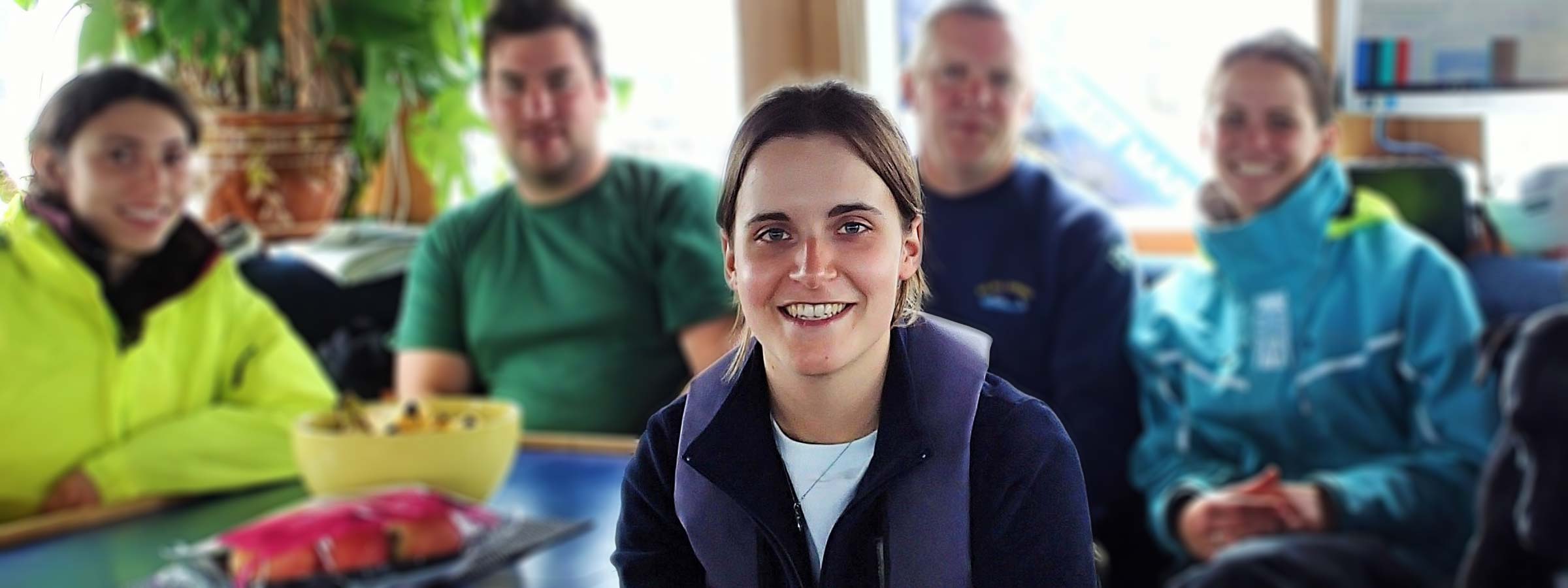So you’ve now met our new business development managers for offshore renewables, Mike Ellis, and marine robotics, Aidan Thorn. Now it’s time to meet our third new BDM, Michelle Barnett. Michelle’s moved over from doctoral research into ocean biochemistry to help oceanographers across the globe gain more insight, in whatever discipline they’re in.
As a Doctoral Researcher I found myself on research vessels year after year collecting data in the Western English Channel, offshore of Falmouth and Plymouth. Back then, my focus was phytoplankton communities within subsurface chlorophyll maxima and the significance of these features in a biogeochemical and ecological context. I used equipment ranging from an acoustic current Doppler profiler (ADCP) and conductivity, temperature, and pressure of seawater instrument (CTD) with a Niskin rosette sampler to a holographic camera system and a flow cytometer.

Fast forward three years and I am back in Plymouth. This time, it was aboard Sonardyne’s trials and training vessel, Sound Surveyor, getting hands-on with our (Sonardyne) equipment, including a Pressure Inverted Echo Sounder (PIES), SPRINT-Nav hybrid navigation instruments and the Mini-Ranger 2 Ultra-Short BaseLine (USBL) system. Being able to see this kit in action really makes you appreciate just how innovative, effective and easy to use Sonardyne technology is. But also how adaptive Sonardyne kit is to applications in defence, energy and ocean science.
Enabling oceanography with Pressure Inverted Echo Sounders
My focus is ocean science, so of course I was most fascinated by the science applications for these systems. Let’s start with PIES. It’s an instrument for simultaneously measuring two-way travel time through the water column and pressure at the seabed. It can be configured for autonomous monitoring over many months and even years. It also has an embedded acoustic modem, allowing for data retrieval without recovery of the device to the surface. Combining two-way travel time and pressure-derived depth enables average sound speed in the water column to be determined. This has obvious marine seismic applications, reducing uncertainty in the seismic data, but the capability to measure two-way travel time also has applications within the field of ocean science.

Here, a PIES is used slightly differently. Oceanographers measure two-way travel time because it is related to historical water column structure and enables density profiles to be derived. Not too long ago a mass deployment of modem-enabled PIES was used to map local horizontal velocity and density fields in the extended Loop Current System in the Gulf of Mexico, as part of a project to understand the processes underlying the Loop Current System. This is a major oceanographic feature, which has implications for harmful algal blooms, hurricanes, trophic dynamics… the list goes on.
A key advantage of PIES, with its integrated modem, is being able to supply near real-time data for input into forecasting models. With these, Loop Current System forecasts can be deduced that will be beneficial to a range of activities, including oil and gas operations, hurricane forecasting, fishing and tourism. From that one project alone, it’s not hard to imagine how PIES could play an integral role in future leading ocean research.
A powerful tool for tracking and communications – Mini-Ranger 2

On to Sonardyne’s Mini-Ranger 2 USBL system – engineered for underwater tracking and communications of anything from towed bodies to autonomous underwater vehicles. This system, together with the wider Ranger 2 family of USBL systems, fits in perfectly in an age where the use of uncrewed data collection platforms, surface and underwater, is becoming more and more prevalent for the ocean science community. With accurate and consistent tracking of uncrewed vehicles, the water column and seabed can be surveyed, analysed and managed more efficiently and effectively, maximising efficient use of precious vessel time. Of course, robots are not the only thing Ranger 2 systems can track; divers and underwater instruments can be too, presenting the science community with a flexible tool for collecting their data with confidence.
Make your underwater vehicles go further with SPRINT-Nav
The last system I want to mention today is SPRINT-Nav. It’s a hybrid navigation instrument that tightly couples our SPRINT INS, Syrinx Doppler velocity log (DVL) and a high-accuracy pressure sensor in a single, and surprisingly small, housing. This combination provides unprecedented levels of navigational capability for remotely operated vehicles (ROVs), uncrewed surface vessels (USVs) and autonomous underwater vehicles (AUVs).
If it is high performance, accuracy and reliability you need for your uncrewed underwater or surface vehicle, SPRINT-Nav is absolutely the instrument to choose. From an ocean science applications perspective, longer navigationally accurate ocean survey operations, in the absence of external references, is ideal for data collection in remote areas. For a sector that is often constrained by funding availability, SPRINT-Nav could certainly allow more ocean research opportunities to be explored and ultimately seized.
Over the past three years, I have changed from being a Doctoral Researcher in Ocean Biogeochemistry to Business Development Manager for Ocean Science, here at Sonardyne. Yet one thing has remained constant – my appreciation for the need for observational oceanographic data. The oceans are of great biogeochemical, physical and socio-economic importance and therefore it is critical that they are understood. This includes an awareness of how they are changing and how they may respond to future activities and events. Hence, there is a great and urgent demand for oceanographic data. The power, innovation and possibilities presented by our instruments are already helping with satisfying this demand and will continue to do so as observational ocean science continues to advance.
